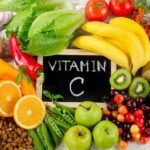Is Cheese Addictive? Understand the Science

Have you ever felt that pull towards the cheese drawer, a seemingly irresistible urge for a cheddar or gouda? Many of us have that experience, and it raises the question: can cheese really be addictive?
Understanding this cheesy conundrum goes beyond just personal curiosity. It can help us navigate our own eating habits and shed light on the complex relationship between food and the brain. If certain foods trigger reward systems in a way similar to addictive substances, it can inform dietary strategies and approaches to managing weight and cravings.
Also Read: 9 Reasons You Must Add Fiber to Your Diet
Comparison with Drug Addiction
Cheese addiction, while a catchy term, differs significantly from drug addiction. Here’s a breakdown:
Similarities:
Reward System: Cheese, like some drugs, might interact with the brain’s reward system. Cheese contains casein, a protein that breaks down into casomorphins. These casomorphins have an opioid-like structure, potentially attaching to some of the same dopamine receptors as drugs, leading to a feeling of pleasure and craving.
Differences:
- Strength: The effect of casomorphins is much weaker than drugs. They are also quickly broken down by the body, unlike drugs that can linger for extended periods.
- Compulsion: Drug addiction often involves compulsive behavior, where people use despite negative consequences. While cheese cravings can be strong, they typically don’t lead to uncontrollable actions or neglecting responsibilities.
- Withdrawal: Drug withdrawal symptoms are often severe and debilitating. Cheese withdrawal might involve cravings and irritability, but they are much milder and shorter-lived.
Scientific Studies:
Research is ongoing, but the evidence for cheese being truly addictive is inconclusive. Some studies, like one by Dr. Nicole Avena, suggest cheese triggers reward pathways similar to drugs. However, others haven’t found significant evidence of casomorphins affecting the brain’s reward system in humans.
While cheese may trigger cravings due to its taste, fat, and potential casomorphin effect, it doesn’t seem to be addictive in the same way as drugs. The science is still developing, but the key takeaway is that cheese cravings are likely much milder and easier to manage than drug addiction.
Also Read: Foods That Help You Get Better Sleep
Cravings and Cheese: What’s the Connection?
The irresistible pull of cheese goes beyond its deliciousness. Cravings, especially for cheese, can be explained by the fascinating interplay between our brain, food, and a key player: dopamine.
Mechanisms of Craving:
Cravings are like an internal alarm system triggered by a complex dance between several brain regions:
- The amygdala: This area processes emotions, including positive ones associated with food. When you see or smell cheese, the amygdala lights up, priming you for a rewarding experience.
- The hippocampus: This memory center remembers past pleasure from cheese, further intensifying the craving.
- The prefrontal cortex: This region controls decision-making. In the face of a craving, the prefrontal cortex can be overruled by the strong signals from the amygdala and hippocampus, making it harder to resist.
- The reward system: This network of brain areas, including the ventral striatum, releases dopamine, a neurotransmitter associated with pleasure and reward. When you eat cheese, dopamine levels surge, creating a sense of satisfaction.
Dopamine’s Role:
Dopamine plays a critical role in the craving cycle:
- Anticipation: When you see or think about cheese, dopamine levels rise in anticipation of the pleasure it might bring. This triggers that familiar “cheese drawer call.”
- Reward: Eating the cheese leads to a surge in dopamine, reinforcing the positive association with cheese and making you more likely to crave it again in the future.
- Craving Cycle: Over time, with repeated indulgence, the brain might require more cheese to achieve the same dopamine rush. This can lead to a cycle of craving and consumption.
Cheese and Dopamine:
Cheese may be particularly effective at triggering the dopamine reward system due to a few factors:
- Fat and Sugar: Cheese often contains a combination of fat and sugar, which are known to stimulate dopamine release.
- Casomorphins: As mentioned earlier, cheese contains casein, a protein that breaks down into casomorphins. These casomorphins have an opioid-like structure and might weakly interact with dopamine receptors, although the exact effects are still being debated.
Understanding the craving process and dopamine’s role can help us make informed choices about cheese consumption. While cheese can be part of a healthy diet, being aware of the potential for cravings can empower you to enjoy it in moderation.
The Nutritional Perspective: Is Cheese Unhealthy?
Cheese’s addictive potential might raise concerns about its healthfulness. Let’s delve into its nutritional profile to understand its benefits and drawbacks.
Nutritional Content of Cheese:
Cheese is a concentrated source of nutrients, packing a punch in a relatively small serving. Here’s a general breakdown:
- Protein: Cheese is an excellent source of protein, essential for building and repairing tissues.
- Fat: Cheese varies in fat content, with some cheeses being higher in saturated fat, which can raise LDL (bad) cholesterol if consumed in excess.
- Calcium: Cheese is a rich source of calcium, crucial for strong bones and teeth.
- Other Vitamins and Minerals: Cheese also contains other essential vitamins and minerals like Vitamin D, Vitamin B12, and zinc.
Benefits of Cheese:
In moderation, cheese can be a nutritious addition to your diet:
- Promotes Bone Health: The calcium and Vitamin D in cheese contribute to bone health and may help prevent osteoporosis.
- Muscle Building: The protein content in cheese can support muscle growth and repair.
- May Offer Other Health Benefits: Studies suggest some cheeses might offer additional benefits like improved gut health or reduced risk of type 2 diabetes, although more research is needed.
Drawbacks of Cheese:
Excessive cheese consumption has some potential downsides:
- High in Saturated Fat: Some cheeses are high in saturated fat, which can increase LDL cholesterol and raise the risk of heart disease if consumed in excess.
- High in Sodium: Cheese can be high in sodium, which can contribute to high blood pressure in some individuals.
- Can Contribute to Weight Gain: Cheese is calorie-dense, and overconsumption can lead to weight gain.
Cheese can be a nutritious part of a balanced diet. The key is moderation. Opt for lower-fat cheeses and enjoy them in portions that fit your overall calorie needs. If you have concerns about cheese’s impact on your health, consult a registered dietitian for personalized advice.
Also Read: Pay Attention to Your Vitamin D Levels
In Crux
Our cheese journey has explored the science behind cravings, the nutritional value of cheese, and the question of addiction.
So, can you truly be addicted to cheese? The answer leans towards no. Cheese is a delicious food that our brains reward us for enjoying, but it doesn’t hijack our behavior in the same way as addictive substances.
The key takeaway is to find balance. Savor cheese as part of a healthy diet, but be mindful of portion sizes and choose lower-fat options when possible. By understanding the science behind cheese cravings, you can make informed choices and enjoy this delightful food without guilt.
How much did you like Our detailed Is Cheese Addictive? Unpacking the Science and Myths? Please share your view in the comment box. Also, please share these Blogs with your friends on social media.
Recommended











